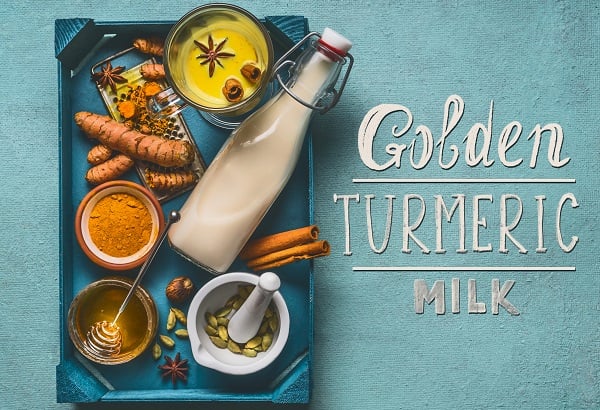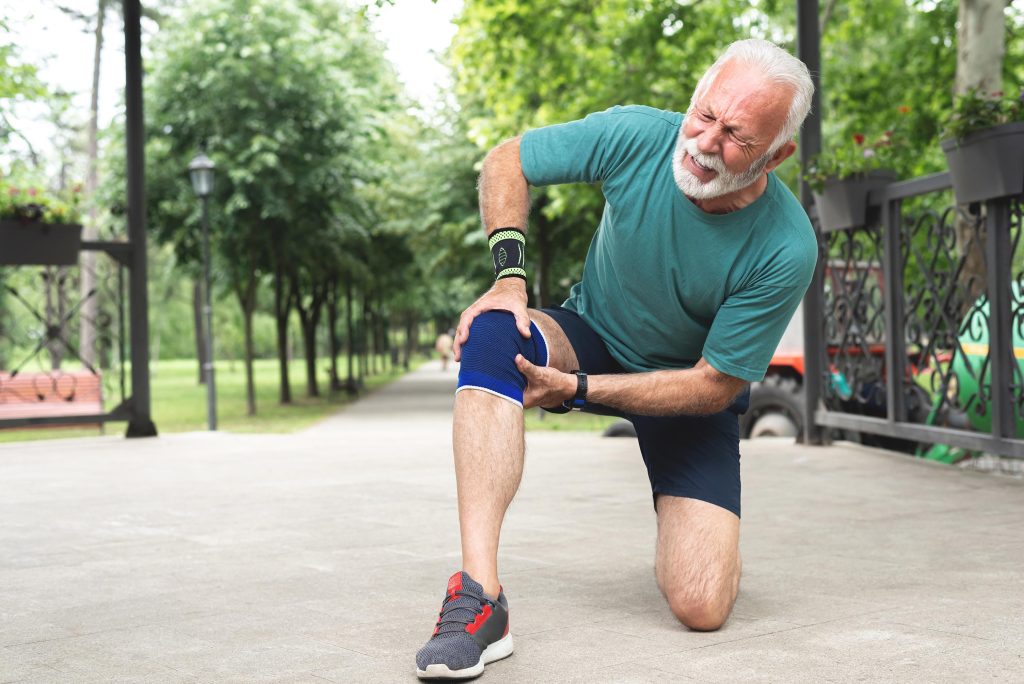
When people hear “total knee replacement” (TKR), they imagine risky surgery, a lot of pain, and months of recovery time. If you have knee problems, you may avoid the discussion and choose to grin and bear the daily pain. I am here to tell from personal experience that addressing it at the start makes so much more sense.
What is a Total Knee Replacement (TKR)?
TKR isn’t the same invasive surgery that it was five+ years ago. With today’s medical technology, just the arthritic part of the bone is replaced. In a typical knee replacement surgery today, about a ¼ inch from the bottom of the femur and a ¼ inch from the top of the tibia is removed. The patella (knee cap), muscles, and ligaments that surround the knee remain intact. Metal caps the ends of the exposed femur and tibia. Synthetic polymer buffers the capped bones and acts as cartilage. This part is the “knee replacement.”
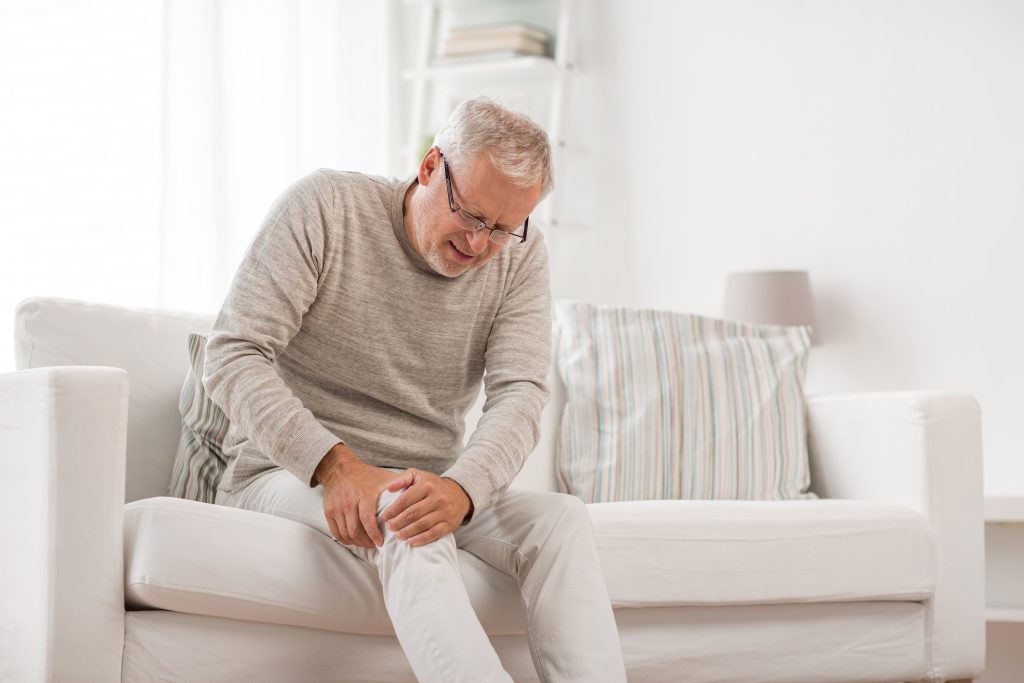
Recovery times are shorter now too. Most people are up and walking within a few days, and some are back to the physical activities they love within a few months.
Like many people, my husband Frank avoided dealing with his knee issues for years. It was difficult for me to watch him get in and out of the car or climb the stairs in pain. And how many mornings did he wake up saying, “Oh, my aching knee”? It seemed like a daily struggle, and it was only getting worse.
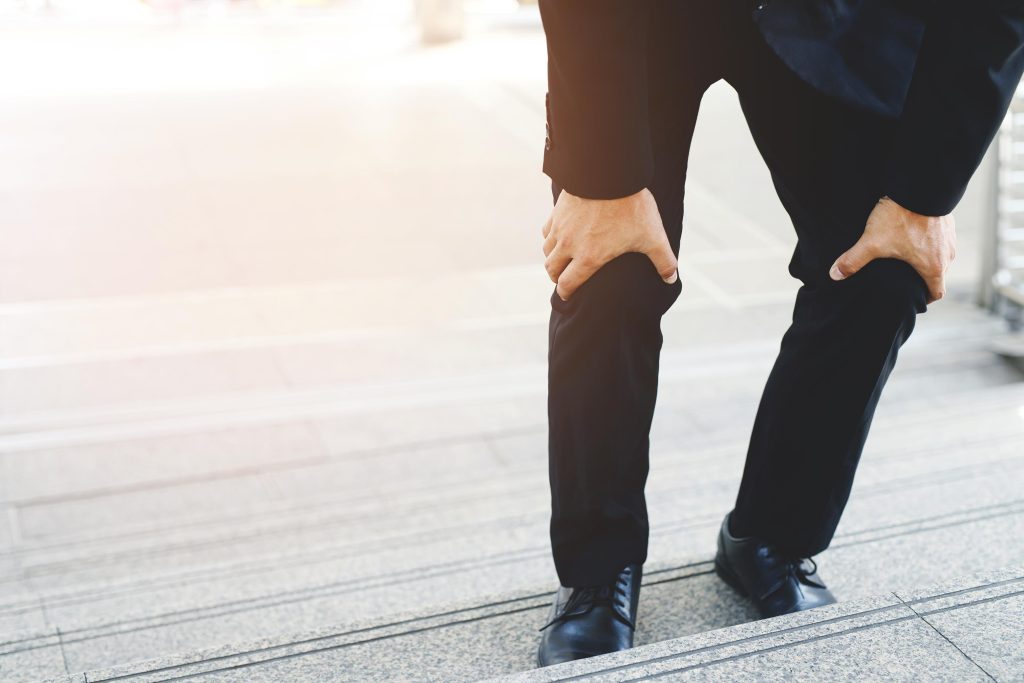
Frank’s Knee Pain Journey
Frank first noticed twinges of pain in his knees about ten years ago. Having played college hockey, he chalked it up to past injuries. As a tough guy, he suffered through it with only the help of over-the-counter pain killers.
Eventually, walking a round of golf or hiking the local hills would lead to throbbing stiffness so intense that, at times, he could barely walk.
Frank finally consulted an orthopedic doctor. X-rays showed that he had osteoarthritis, also known as wear and tear arthritis. The doctor said that Frank’s condition was degenerative and that soon the smooth cartilage that covers the ends of the bones would wear away.
“You’ll need a total knee replacement,” explained the doctor the day Frank got his prognosis.
But Frank wanted to wait. At 55 years old, he felt he was too young for surgery, and as a former hockey player, he had a very high threshold for pain.
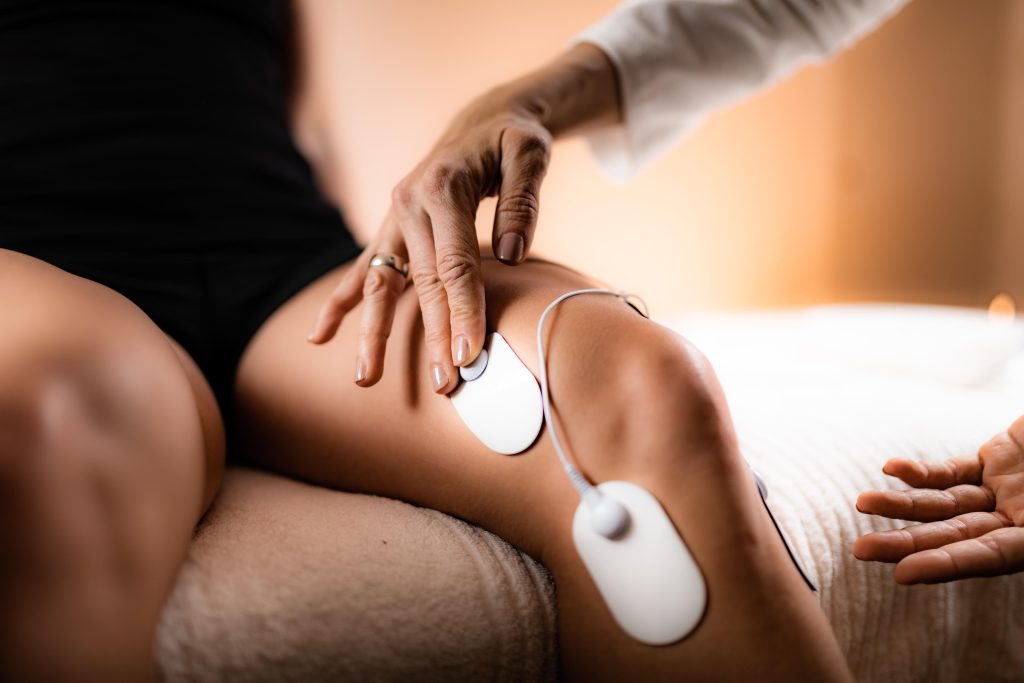
The doctor suggested a few alternative therapies. Over the following years, Frank tried cortisone injections, Synvisc shots, and transcutaneous electrical nerve stimulation therapy (TENS).
These approaches worked with various degrees of effectiveness, but the results were always temporary. Frank also took it upon himself to create an environment where he’d have the best shot of avoiding “the knife.”
First, Frank committed to losing twenty pounds.
One of the things Frank’s doctor recommended to alleviate pain in the near term and improve knee function was to shed some weight. It’s simple math – the more weight you carry, the more stress you put on your knees. His doctor also explained that trimming down would contribute to a successful knee replacement and recovery in the future.
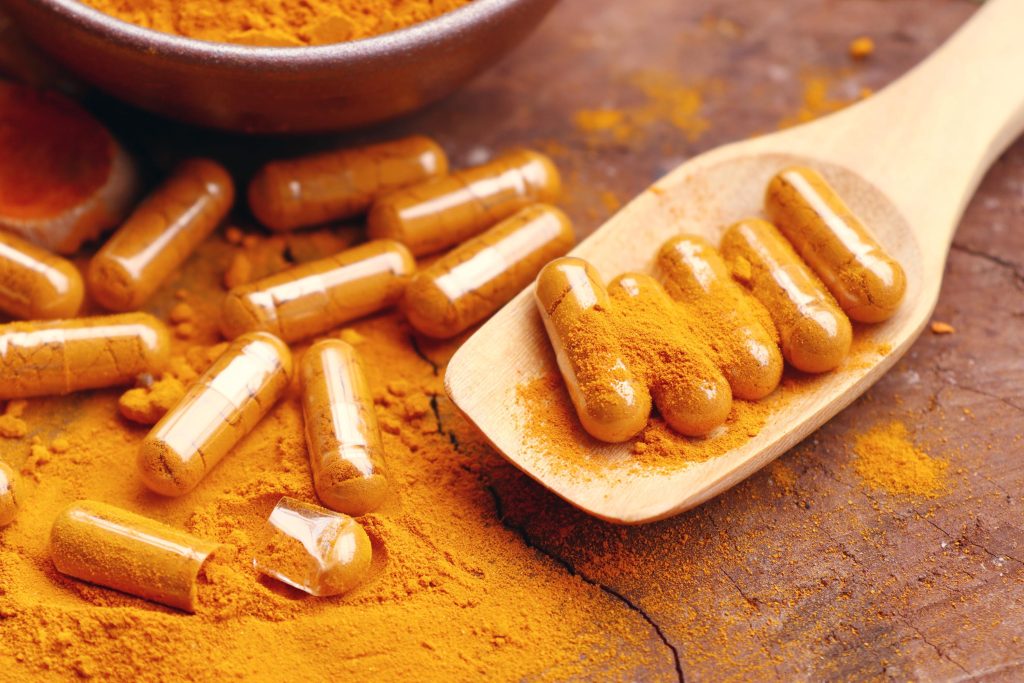
Natural Inflammation Remedy
Next, Frank started taking turmeric supplements.
He wanted to avoid overusing pain/inflammation relief in the form of non-steroidal anti-inflammatory medications (NSAIDs), like Ibuprofen or Naproxen. The problem with NSAID use is that gastrointestinal problems are a common side effect. Further, long-term use can affect your heart and kidneys. (1)
Research shows that curcumin, the active ingredient in turmeric, is as effective as over-the-counter anti-inflammatories for combating knee discomfort and stiffness. More importantly, curcumin is a natural way to alleviate inflammation without side effects. (2-3)
Shedding pounds and taking turmeric definitely minimized the pain and discomfort of Frank’s degenerative arthritis and helped postpone the inevitable TKR.
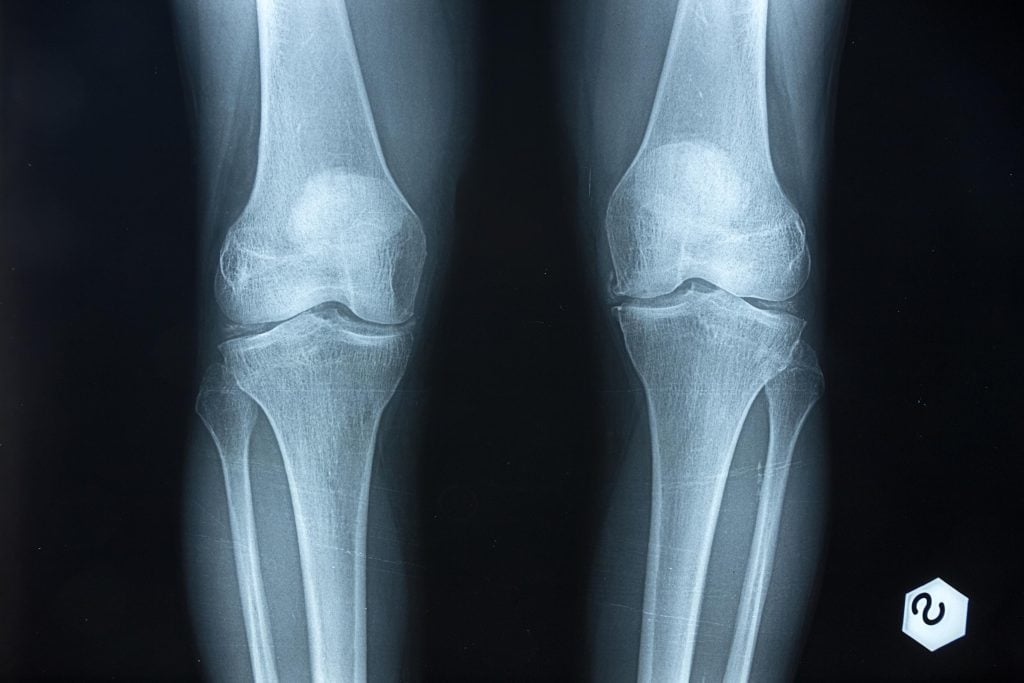
A few years later, the second set of X-rays revealed that the osteoarthritis had progressed to bone on bone in his left knee. His doctor again recommended surgery.
Finally, it was time.
We worked with Frank’s doctor to identify a leading orthopedic surgeon specializing in TKR. Frank was nervous about downtime and discomfort. Amazingly, he was on his feet within three hours after surgery. He followed his doctor’s recommendations for a week of physical therapy to ensure a positive outcome.
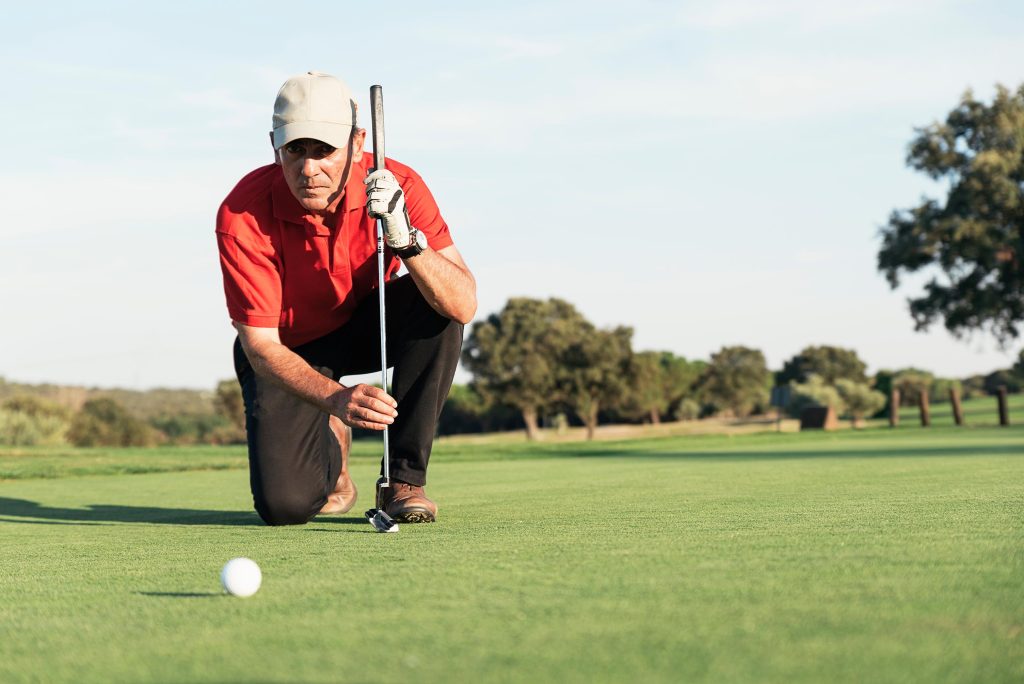
A year later, he’s playing golf and pickleball, keeping the pounds off, and still taking turmeric daily to reduce inflammation and maximize his mobility.
All Turmeric Is Not Created Equal
When you’re looking for a turmeric supplement, it’s crucial that it contains significant levels of curcumin like Stonehenge Health’s Dynamic Turmeric™. It’s a powerful blend of 1,650 milligrams of organic turmeric curcumin complex – one of the highest levels of curcumin you’ll find in one daily dose. It also contains fifteen milligrams of BioPerine, which improves bioavailability, ensuring your body gets turmeric’s maximum benefits. (4)
Dynamic Turmeric™ has helped thousands of people, and it could be just what your body needs to help reduce inflammation and get you back to doing the things you love. (5) Add daily exercise and a positive attitude, and you’re well on your way to a more mobile, happier, healthier life!
Ask your doctor if adding Dynamic Turmeric™ to your daily health and wellness routine could be right for you, and always confirm with your doctor before you stop taking prescription medications.

Sources:
1. James, David. 1999. “The Multisystem Adverse Effects Of NSAID Therapy”. The Journal Of The American Osteopathic Association 99 (11): 1-7. degruyter.com/document/doi/10.7556/jaoa.1999.02/htm
2. Natural anti-inflammatory agents for pain relief – PMC | ncbi.nlm.nih.gov/pmc/articles/PMC3011108/
3. Zhou, Yan, Jianghua Ming, Ming Deng, Yaming Li, Bochun Li, Jia Li, Yonggang Ma, Zhonghui Chen, Guirong Wang, and Shiqing Liu. 2020. “Chemically Modified Curcumin (CMC2.24) Alleviates Osteoarthritis Progression By Restoring Cartilage Homeostasis And Inhibiting Chondrocyte Apoptosis Via The NF-Κb/HIF-2Α Axis”. Journal Of Molecular Medicine 98 (10): 1479-1491. doi:10.1007/s00109-020-01972-1. link.springer.com/article/10.1007/s00109-020-01972-1
4. Henrotin, Yves, Fabian Priem, and Ali Mobasheri. 2013. “Curcumin: A New Paradigm And Therapeutic Opportunity For The Treatment Of Osteoarthritis: Curcumin For Osteoarthritis Management”. Springerplus 2 (1). doi:10.1186/2193-1801-2-56. link.springer.com/article/10.1186/2193-1801-2-56
5. Jamwal, Rohitash. 2018. “Bioavailable Curcumin Formulations: A Review Of Pharmacokinetic Studies In Healthy Volunteers”. Journal Of Integrative Medicine 16 (6): 367-374. doi:10.1016/j.joim.2018.07.001. sciencedirect.com/science/article/abs/pii/S2095496418300773



